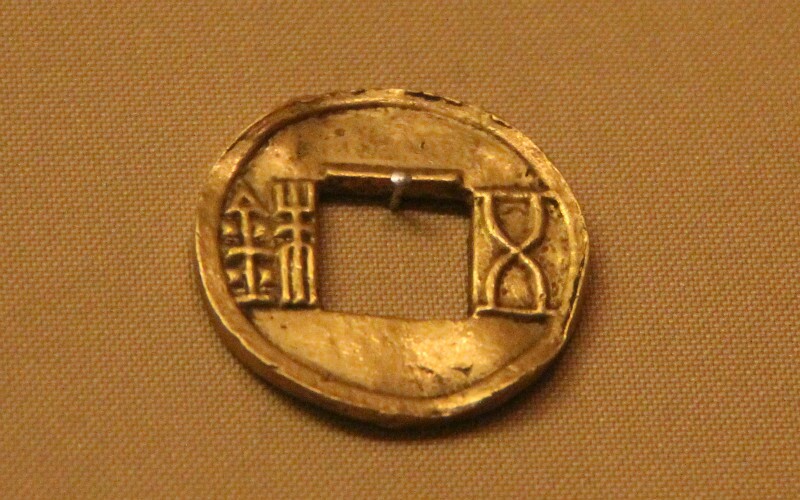Brief Introduction
In ancient China, coins were the main forms of currency. These coins can be made of copper, iron, lead, gold and silver with different shapes, weight and marks. Different from equivalents like draught animals, textiles and shells, ancient coins play an important role in archaeology, that they not only have the reference value to judge the history of relics or remains, but also are significant materials for researching the history of commercial economy in ancient times. Because draught animals and cereals are difficult to deposit and divide, Chinese forebears used shells as a medium of exchange and unit of account in commerce during the last phase of the primitive society. The metal coins turned up in the last phase of the Spring and Autumn Period (770 BC–476 BC), and the history of paper currency in China can be dated up to the Northern Song Dynasty (960–1127).
Shell Money
Because shell has small and exquisite appearance, bright color, solid texture, and the feature of easy to carry and count, shell is used as a kind of primitive money circulated at the end of the Neolithic Age. Shell money is a kind of commodity money lasting the longest time. The unit of shell money is ‘peng’ (朋 in Chinese, means friend), which originally means two clusters of shells. Generally speaking, one peng is made up by two clusters of 10 shells. At the end of the Shang Dynasty (1675 BC–1029 BC), due to the lack of shells in Northeast China, there were other forms of shell money which can be made of pottery, stone, bone, jade, copper and gold. However, the most common one is made from natural shells.
The invention of shell money which made of copper at the end of the Shang Dynasty (1675 BC–1029 AD) marks the beginning of the use of metal coins in China.
Copper Cash
Copper cash is the general terms of Chinese ancient currency made of copper which turned up in the Qin Dynasty (221 BC–206 BC), a dynasty leaving so many legacies to the Chinese people such as the Great Wall and the Terracotta Army. The copper coin is evolved from ‘huan cash’ (环钱, a kind of ancient copper coin with ring shape used in the Warring States Period which lasted from 475 BC to 221 BC). Generally speaking, most of the copper coins are round and there is a square hole in the center of the coin, hence there is another Chinese name called ‘fangkong cash’ (Fangkong, means square hole) and a nickname called ‘kongfang brother’. People can distinguish different kinds of copper coins by the letters marked on the coins. These letters always refer to the region title in different dynasties, such as ‘Qianlong Tongbao’ (乾隆通宝, Qianlong is one reign title lasting from 1736 to 1795, ‘Tongbao’ means the treasure in circulation) and ‘Yongzheng Tongbao’ (雍正通宝) in the Qing Dynasty (1616–1911).
The earliest copper coin is called ‘ban liang qian’ (半 两钱, Ban Liang coins) which turned up and began to circulate in the whole country following the found of the Qin Dynasty (221 BC–206 BC). Ban Liang coins were more material economical than any other coins circulated at that time and the square hole was easier to make. This revealed that people at that time were efficiency-conscious, which was also reflected in the spectacle of the Terracotta Army.
People in ancient times believed that the heaven is round and the earth is square, which is one of the reasons why the copper coin has the round shape and a square hole in the center. Besides the mostly round copper coins, there are also copper coins in other shapes: spade-shaped coins and knife-shaped coins in the Spring and Autumn Period (770 BC–476 BC), and ring-shape coins in the Warring States Period (475 BC to 221 AD). In addition, silver ingots and gold ingots were also circulated in ancient China, and the wide use of silver coins was beginning at the end of the Ming Dynasty (1368–1644).
Jiao Zi - the Earliest Paper Currency in the World
The earliest paper currency in the world was called Jiao Zi which appeared in the early North Song Dynasty (960–1127). Due to the great development on commodity economy, the increase of trade, and the high demand of currency, merchants need a kind of currency with convenience on carrying with, hence the paper money turned up. It was first issued in 1023 together by 16 merchant princes in Chengdu, Sichuan Province. This paper currency was a piece of paper printed with houses, trees, men and cipher.










